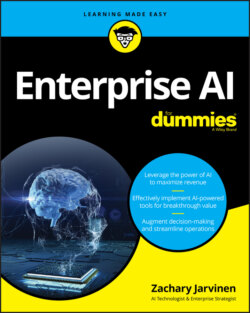Читать книгу Enterprise AI For Dummies - Zachary Jarvinen - Страница 86
Reinforcement learning and model drift
ОглавлениеPerhaps the most classic example of the difficulty of coding and training empathy into AI is Microsoft’s Twitter bot, Tay. Launched at 7:14 a.m. on March 23, 2016, Tay was designed to mimic the linguistic patterns of a 19-year-old female. But within 16 hours of her launch, and after 96,000 tweets, Microsoft suspended the Twitter account because Tay had become an alt-right, Holocaust-denying, anti-feminist, anti-Semitic troll.
Although Microsoft hasn’t disclosed the technology behind Tay, it has the earmarks of a subset of machine learning called reinforcement learning. Used to teach computers how to play games or to train a robot how to walk, reinforcement learning defines success criteria and then rewards the algorithm when it gets closer to the desired behavior. The machine must figure out for itself how to achieve success. On social media, success correlates to likes, so Tay learned how to maximize engagement from the people who interacted with her.
Tay is an example of model drift. After the model was initially trained and Tay interacted with users without a human in the loop or any automated testing to correct for bias or other issues, model drift came into play due to the skewed nature of the data it encountered.
Nine months later, Microsoft launched Zo, Tay’s 13-year-old sister, which didn’t use reinforcement learning, so model drift wasn’t an issue. Zo avoided potentially charged topics such as religion and politics, shutting them down with comments such as, “not gonna keep talking if u keep this up … just sayin.” Zo lasted for more than two years before disengaging on most social media platforms in March 2019, and completely in July 2019.
